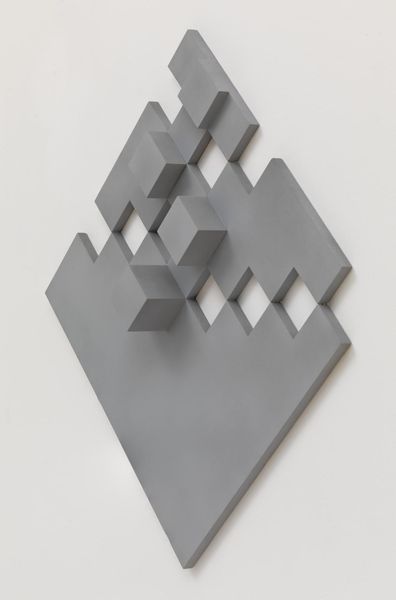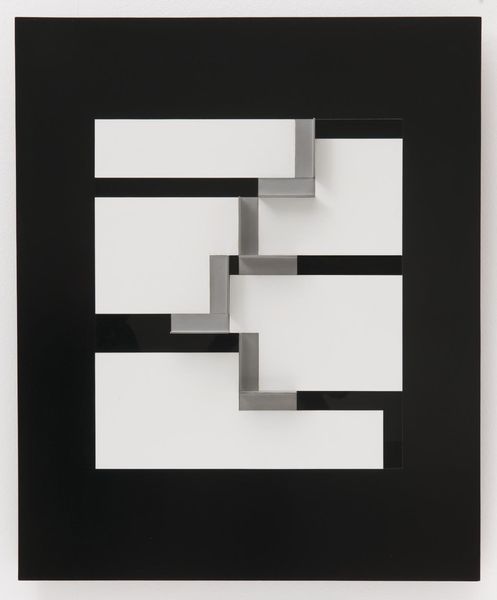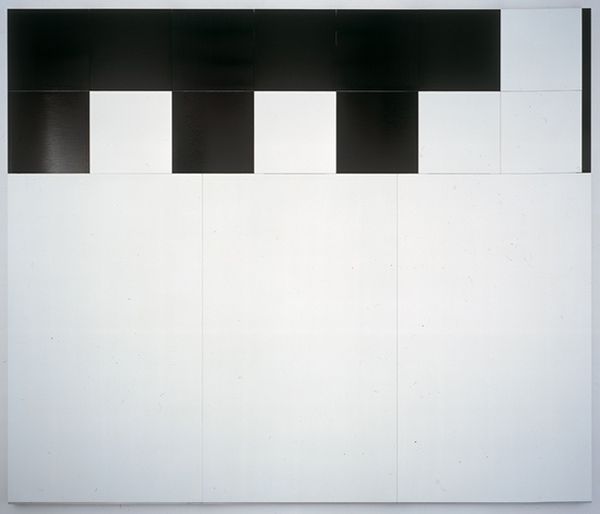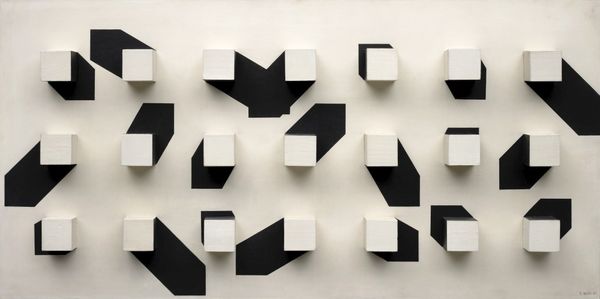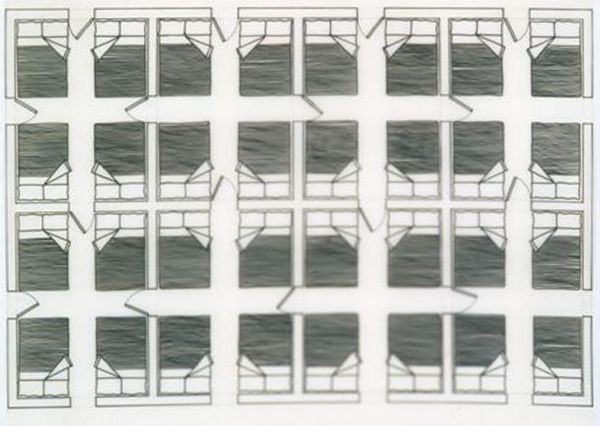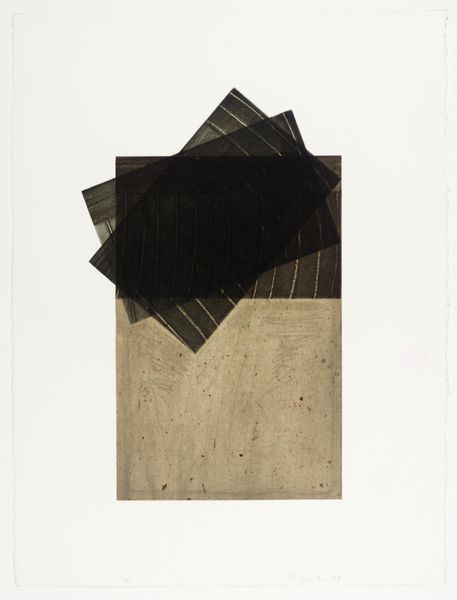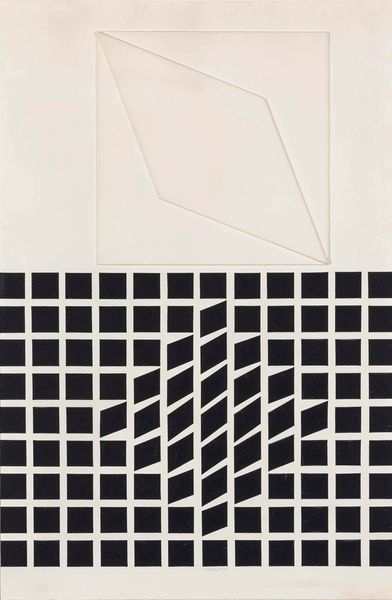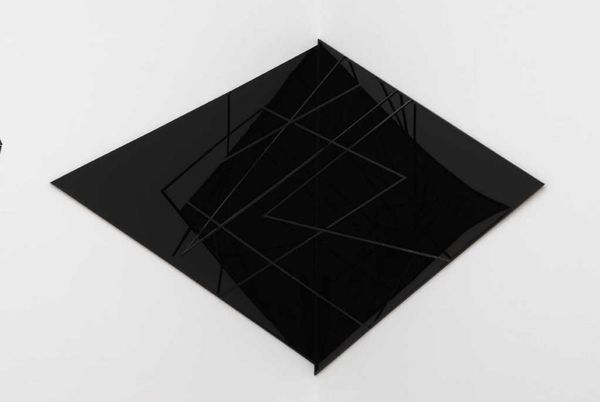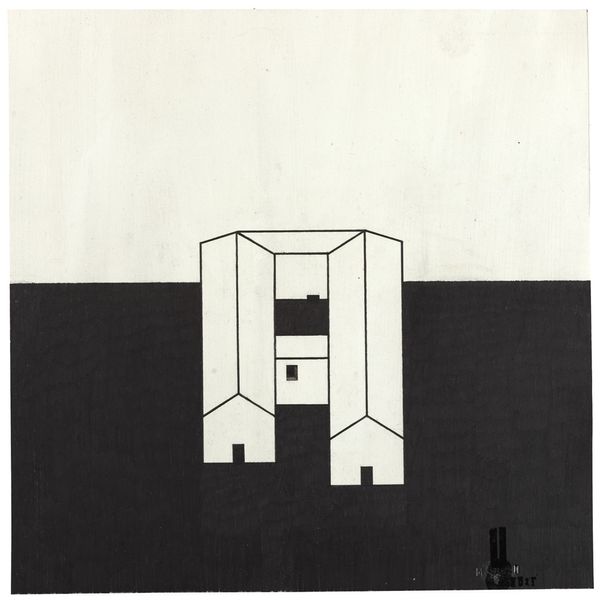
acrylic-paint
#
acrylic-paint
#
geometric
#
geometric-abstraction
#
abstraction
#
hard-edge-painting
Copyright: Eduardo Nery,Fair Use
Editor: This is Eduardo Nery’s *Estrutura nº 10* from 1968, created with acrylic paint. The stepped arrangement of geometric grids against that stark white ground has such an ordered and almost sterile feel. What does this artwork evoke for you? Curator: It makes me consider the historical context of hard-edge painting. This style, prominent in the '60s, often reflects a reaction against the gestural, emotionally driven Abstract Expressionism that came before. How do you think the socio-political climate of the 60s, a time of increasing industrialization and social upheaval, might have influenced Nery’s choice of such a rigid structure? Editor: That's interesting. The hard lines could represent the increasing structure of society or even a longing for order amidst the chaos. Curator: Exactly. Also, think about the role museums and galleries played in promoting this style. Hard-edge, with its clean lines and seemingly objective compositions, lent itself well to the modernist aesthetic of the time, reinforcing the idea of progress and technological advancement. Does this change how you view it at all? Editor: Definitely. It's not just a purely aesthetic choice, it’s connected to larger cultural trends and even the art market. Knowing that it might be making some kind of statement about the "establishment". Curator: Precisely. Understanding these power dynamics is key to truly unpacking art from this period. Editor: So it becomes about understanding how an artist is shaped by the very systems they are critiquing. Thanks! I never considered the influence of the institutions themselves!
Comments
No comments
Be the first to comment and join the conversation on the ultimate creative platform.
